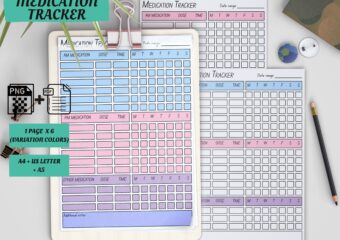What is Block Scheduling in Nursing?

- How To Write Therapy Progress Notes For Mental Health (Without Drowning in Paperwork) - November 30, 2025
- How to create SMART Goals in Therapy - October 8, 2024
- MICU vs SICU: What is the difference? - March 25, 2024
In the intricate tapestry of healthcare, nurses are the steadfast threads that hold the fabric together. Their pivotal role in patient care demands innovative strategies to optimize their work schedules and efficiency. One such strategy that has gained traction in recent years is block scheduling in nursing. In this article, we will delve into the concept of block scheduling, its applicability to different nursing roles, provide practical examples of nursing block schedules, discuss the advantages it offers, and examine the steps involved in its implementation. This exploration aims to shed light on the pragmatic side of nursing scheduling, offering valuable insights for those curious about its inner workings and significance in healthcare.
What Is Block Scheduling in Nursing?
Block scheduling is a scheduling system that allows nurses to work specific, predetermined shifts over a designated period, such as several weeks or months. It differs from traditional scheduling, where nurses may have varying shifts and schedules from week to week. With block scheduling, nurses can anticipate their work hours more reliably, providing them with greater stability in their personal lives and facilitating improved work-life balance.
The concept of block scheduling involves grouping shifts into blocks, which can vary in length. These blocks can range from a few days to several weeks, depending on the healthcare facility’s needs and preferences. For example, a nurse might work a block of day shifts for two weeks, followed by a block of night shifts for another two weeks.
What Types of Nurses Can Use Block Scheduling?

Block scheduling can be adapted to various nursing specialties and settings. It is particularly beneficial for nurses who work in hospitals, long-term care facilities, and other healthcare institutions where 24/7 coverage is required. Here are some examples of nursing roles that can benefit from block scheduling:
- Hospital Nurses: Nurses in hospitals, especially those working in critical care units, emergency departments, and surgical suites, can find block scheduling advantageous. It ensures that there is a consistent staff presence during peak patient flow times.
- Long-Term Care Nurses: Nurses providing care in long-term care facilities, such as nursing homes or rehabilitation centers, can benefit from block scheduling to maintain continuity of care for their residents.
- Pediatric Nurses: Pediatric nurses often work with children who require specialized care and routines. Block scheduling allows them to develop rapport with their young patients and their families by consistently being available during specific periods.
- Maternity and Labor & Delivery Nurses: These nurses can use block scheduling to ensure adequate coverage during labor, delivery, and postpartum care, which can be unpredictable and require around-the-clock attention.
Nursing Block Schedule Examples
To better understand how block scheduling works, let’s look at a couple of examples:
Example 1: A 2-Week Block Schedule for a Hospital Nurse
- Week 1: Day shift (7:00 AM – 7:00 PM) for five days
- Week 2: Night shift (7:00 PM – 7:00 AM) for five days
Example 2: A 4-Week Block Schedule for a Long-Term Care Nurse
- Week 1-2: Morning shift (7:00 AM – 3:00 PM) for ten days
- Week 3-4: Evening shift (3:00 PM – 11:00 PM) for ten days
These examples illustrate how nurses can work consistent shifts within defined timeframes, allowing them to plan their personal lives more effectively.
Benefits of Block Booking for Nurses

Block booking in nursing comes with a range of advantages that contribute to the well-being of nurses and the quality of patient care. These benefits, while not extravagant, play a crucial role in maintaining a healthy nursing workforce and enhancing the overall healthcare experience:
- Predictable Work Hours: Block scheduling allows nurses to anticipate their work hours with confidence. This predictability empowers them to better plan their personal lives and commitments outside of work, reducing stress and improving their overall quality of life.
- Improved Work-Life Balance: The stability offered by block scheduling promotes a healthier work-life balance. Nurses can allocate dedicated time for rest, relaxation, and spending time with loved ones. This equilibrium between professional and personal life fosters a more sustainable and contented nursing workforce.
- Enhanced Patient Care: Consistent schedules facilitate the development of stronger relationships between nurses and their patients. This continuity of care results in improved patient outcomes and satisfaction, as nurses become more attuned to the unique needs of the individuals they serve.
- Increased Job Satisfaction: Contented nurses are more likely to stay committed to their current employers. Reduced turnover rates benefit healthcare institutions by ensuring a stable and experienced nursing staff. Moreover, nurses who find satisfaction in their work are likely to provide better care, creating a positive cycle of mutual benefit.
How Is Block Schedule Nursing Implemented?
The implementation of block scheduling in nursing is a thoughtful process that involves several key steps to ensure its effectiveness and alignment with the needs of healthcare institutions and their nursing staff:
- Assess Facility Needs: To begin, healthcare organizations must conduct a comprehensive assessment of their staffing requirements and patient flow patterns. This analysis helps determine the most suitable structure for block scheduling. Different departments and units may have varying needs, so customization is essential.
- Collaborate with Staff: Involving nursing staff in the decision-making process is paramount. Nurses should have a voice in shaping their schedules, allowing them to express their preferences and address any concerns. This collaboration fosters a sense of ownership and buy-in among the nursing team.
- Flexibility and Adaptability: Block schedules should remain flexible to accommodate changes in staffing requirements, vacation requests, and unexpected situations such as illness or emergencies. Establishing clear protocols for schedule adjustments and coverage ensures a smooth workflow.
- Regular Evaluation: The effectiveness of block scheduling should be monitored and evaluated continuously. This involves gathering feedback from nurses, tracking key performance metrics, and assessing the impact on patient care. Regular reviews enable healthcare institutions to make necessary adjustments and fine-tune the scheduling system.
- Education and Training: Properly educate both nursing staff and management on the intricacies of block scheduling. Ensure that everyone understands the rationale behind the approach and how it benefits both nurses and patients. Training should include using scheduling software, as well as addressing any challenges that may arise during implementation.
- Pilot Programs: Consider implementing block scheduling on a small scale as a pilot program before rolling it out organization-wide. This allows for testing and refinement of the scheduling system, addressing any unforeseen issues, and garnering early feedback from a smaller group of nurses.
- Communication: Effective communication is vital throughout the implementation process. Inform nurses of the changes, provide them with clear schedules well in advance, and maintain open lines of communication for feedback and concerns. Transparency fosters trust and ensures a smoother transition.
- Patient-Centered Approach: While optimizing nursing schedules is crucial, it should never compromise patient care. Ensure that block scheduling aligns with patient needs and safety standards. Maintain sufficient staffing levels to guarantee the highest level of care, even during peak and off-peak hours.



